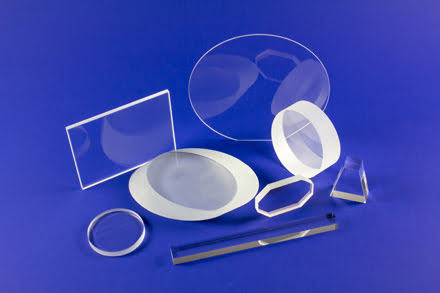|
Thursday, October 13, 2016 |
|

|
|
|

|
Fiber-Optics-Based Sensing System Monitors Structural Health Under Severe Conditions
An all-fiber-optics-based system for monitoring structure health shows promise as a reliable means to oversee structural soundness under extreme conditions. Active ultrasonic nondestructive evaluation (NDE), currently a widely used technique in structural health monitoring, has traditionally employed piezoelectric transducers (PZTs), which can be of limited use in corrosive environments or under extremely high temperatures.
|
|
|
|
|
|
Heliatek Raises €80M to Expand Manufacturing
Organic photovoltaic and solar film developer Heliatek GmbH has raised €80 million ($88 million) to finance the expansion of its HeliaFilm manufacturing capacity. This financing round comprises €42 million ($46.8 million) in equity, €20 million ($22.3 million) in debt and about €18 million ($20 million) in subsidies.
|
|
|
|
|
|
Quantum Approach Measures Optical Molecular Activity With Precision
Quantum optical rotatory dispersion, a technique that uses quantum methods to differentiate and measure molecules when light passes through chiral media, could offer a precise way to measure intricate molecular properties, even when low light or a low concentration of the molecule is used.
|
|
|
|
|
|
Holographic Imaging Technique Diagnoses Malaria Automatically, Accurately
A quantitative phase spectroscopy (QPS) system that incorporates digital holography has been used to spot malaria-infected cells from a simple, untouched blood sample without any help from a human. The technique employs machine learning algorithms and has been shown accurate in detecting malaria infection 97 to 100 percent of the time. The research could form the basis of a fast, reliable test for malaria that could be given by most anyone, anywhere in the field.
|
|
|
|
|
|
Novel Pathway to Light Suppresses Kasha’s Rule
A discovery about how some molecules produce light, in apparent contradiction of Kasha’s Rule, could have several applications, from industrial to biomedical. To explore the origin of aggregation-induced emission, researchers from the University of Vermont and Dartmouth College assessed the emission properties of a series of BF2–hydrazone-based dyes as a function of solvent viscosity. They found these molecules to be highly efficient fluorescent molecular rotors.
|
|
|
|
|
|
 Custom Flat Optics Manufacturing
Custom Flat Optics Manufacturing
Sydor Optics Inc.
Sydor Optics is a custom manufacturer of precision flat-surfaced, parallel and wedged glass optical components specializing in double-sided polishing, continuous pad & pitch polishing, CNC machining and laser machining.
Visit Website
Request Info
|
|
|
|
|
 Injection Molding
Injection Molding
Diverse Optics Inc.
Diverse Optics creates custom precision polymer optics. We manufacture the most challenging components, modules, and assemblies for defense, medical, and commercial applications.
Visit Website
Request Info
|
|
|
 Thin-Film Coatings
Thin-Film Coatings
OptoSigma Corp.
For more than twenty years, OptoSigma has been at the forefront of the optical components industry, manufacturing thin-film coatings to precision standards. Sure, we have an impressive catalog offering, but we also excel at providing specialized manufacturing for custom orders.
Visit Website
Request Info
|
|
|
|
|
|
OSA Frontiers in Optics: The 100th OSA Annual Meeting and Exhibit/Laser Science XXXII 2016
October 17-21, 2016 - Rochester Riverside Convention Center - Rochester United States
Photonics Media Booth: 102
Frontiers in Optics 2016—the 100th OSA Annual Meeting—encompasses the breadth of optical science and engineering and provides an atmosphere that fosters the exchange of information between those working on fundamental research and those looking for solutions to engineering problems. Special symposia and other major events further highlight major advances in many selected areas. With over 1,000 presentations and more than 60 participating companies and industry leaders, this will be one of the year's most comprehensive conferences in optics and photonics. Photo courtesy of OSA, the Optical Society of America.
|
|
|
|
Choosing the Right LED for Medical Diagnostics and Bioanalytical Systems
Wed, Oct 19, 2016 1:00 PM - 2:00 PM EDT
With recent advancements in LED technology, OEMs are presented with new possibilities through a growing number of light source options. There are key factors to consider when determining which light source is best suited for your application, including: wavelengths; uniformity; technology platforms; thermal management; light delivery; power budget; and economy of space. Which light source will provide reliable and repeatable results? How can these factors expedite path to market and ensure success? In this webinar, Dr. Kavita Aswani and Dr. Tom Papanek will discuss these factors in detail and their impact on biomedical or diagnostic design, engineering and integration. Dr. Kavita Aswani is the Senior Applications Scientist for the Life Sciences products at Excelitas Technologies. Dr. Tom Papanek is Director of Global Product Development for Excelitas Technologies, Solid State Lighting.
|
|
|
|
 |
|
|
|

CALL FOR ARTICLES!
Photonics Media is currently seeking technical feature articles on a variety of topics for publication in our magazines (Photonics Spectra, Industrial Photonics, BioPhotonics and EuroPhotonics). Please submit an informal 100-word abstract to Managing Editor Michael Wheeler at Michael.Wheeler@Photonics.com, or use our online submission form.
|
|
|
|
 |
|